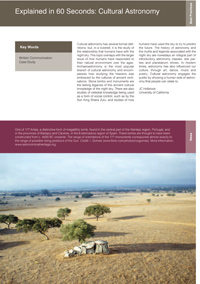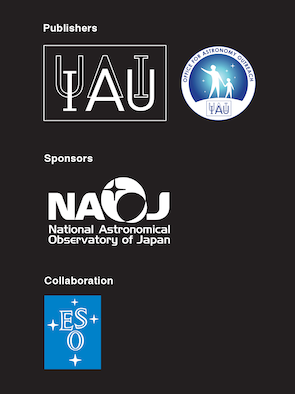
Download this article
- PDF (863 KB)
Back to the Table of Contents
|
Explained in 60 Seconds and News (page 04)
JC Holbrook
Cultural Astronomy
Cultural astronomy has several formal definitions, but, in a nutshell, it is the study of the relationship that humans have with the night sky. This topic overlaps with the larger issue of how humans have responded to their natural environment over the ages. Archaeoastronomy is the most popular branch of cultural astronomy and encompasses how studying the heavens was embraced by the cultures of ancient civilisations. Stone tombs and monuments are the lasting legacies of this ancient cultural knowledge of the night sky. There are also studies of celestial knowledge being used as a form of social control, such as by the Sun King Shaka Zulu, and studies of how humans have used the sky to try to predict the future. The history of astronomy and the myths and legends associated with the night sky are nowadays an integral part of introductory astronomy classes, star parties and planetarium shows. In modern times, astronomy has also influenced our culture, through art, dance, music and poetry. Cultural astronomy engages the public by showing a human side of astronomy that people can relate to.
|

